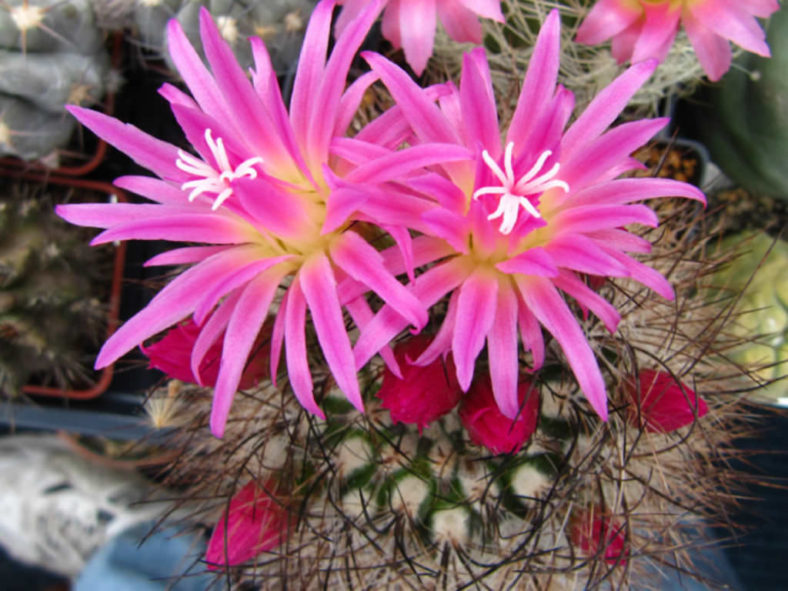Eriosyce is a genus of globose or somewhat cylindrical South American cacti. Their round ribbed stems, heavily armed with dense, strong spines in most species, and similar flower structures had earned them a place in the genus Echinocactus in early taxonomies. However, the genus has existed since Rudolph Philippi in 1872, and everyone for the last 100 years or more agrees these plants are not Echinocactus.
These cacti are rugged survivors of arid South American deserts. Many occur at high altitudes, enduring big temperature swings and high UV. The plants remain dormant until conditions become favorable again, allowing them to cope with the harsh climate. This environmentally controlled growth leads to a significant discrepancy between plants in their natural habitat and those in cultivation, even of the same species. Plants in cultivation with sparse spines and plump, round stems may be flattened and covered with spines so dense that the stem is not visible at all.
Growing Conditions and General Care
Eriosyces require intense sun exposure to develop good spinal growth but tolerate light shade, which may be helpful during the hottest summer days.
Good drainage is essential for healthy growth. Therefore, a rich, fast-draining cactus mix is ideal.

Water the cactus every two weeks or slightly less often during the summer, depending on how moist the soil remains. In the winter rest period, cut watering back to once a month, or in humid areas, not at all. One of the key factors in success with these cacti is avoiding any hint of wet soil. Because their root systems are weak, they are especially prone to root rot, which can eventually kill your plant.
Regular doses of cactus fertilizer will help it grow its best during the summer. However, use diluted fertilizer for the best results.
Repotting
Eriosyces are slow-growing cacti that should only need repotting every other year or so. When repotting a cactus, carefully remove it from its pot and remove any clumped soil.
Propagation
Eriosyces are usually propagated from seeds.
Links
- Back to genus Eriosyce
- Succupedia: Browse succulents by Scientific Name, Common Name, Genus, Family, USDA Hardiness Zone, Origin, or cacti by Genus